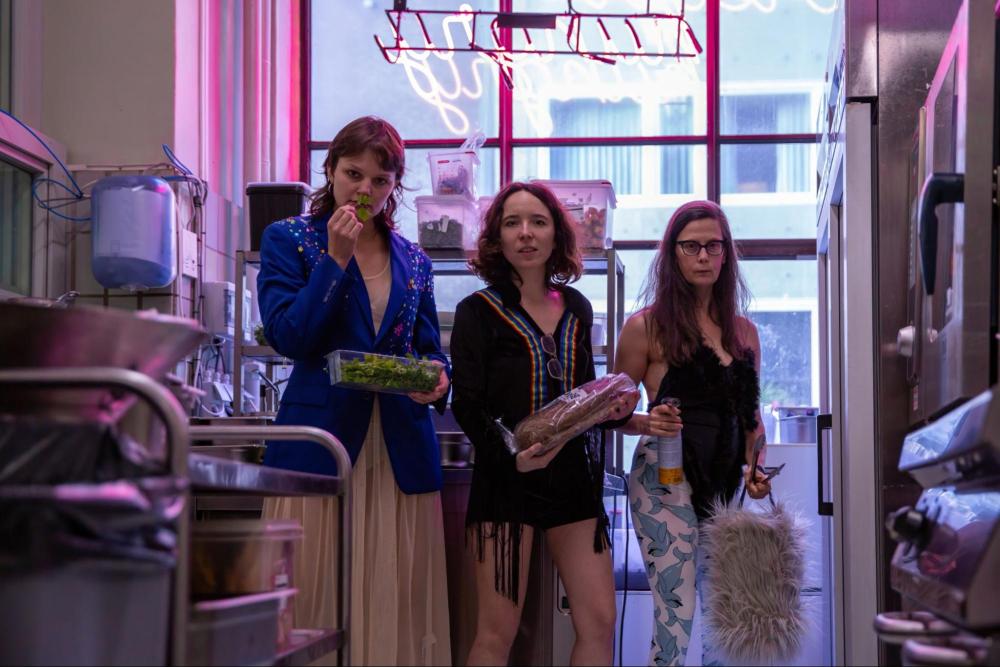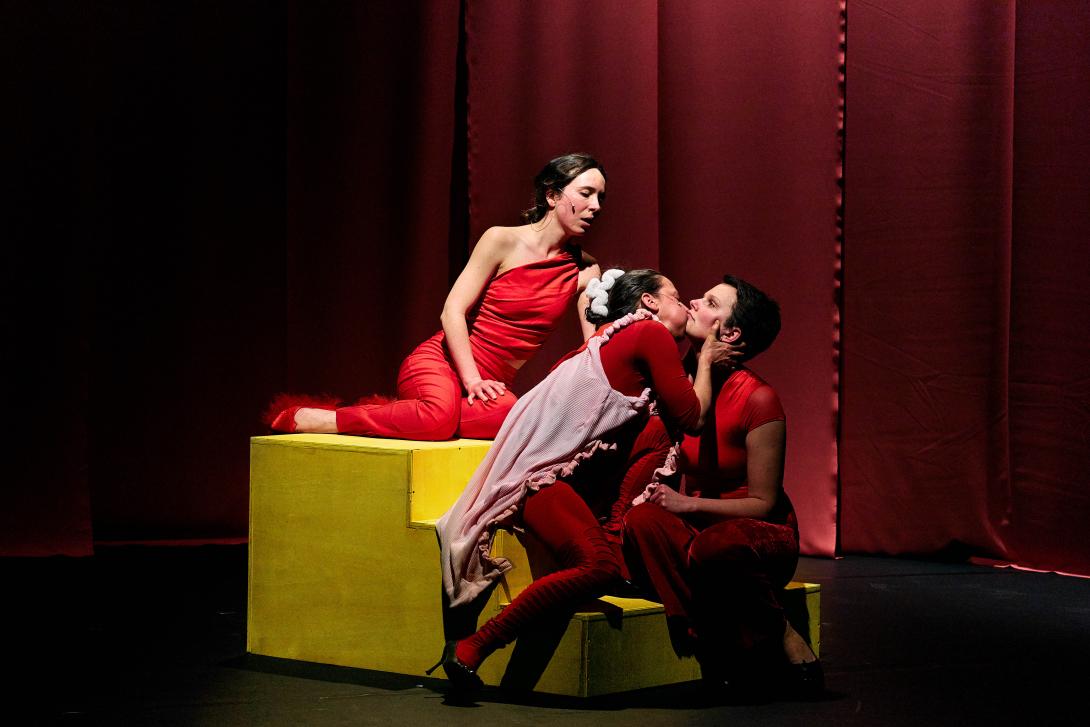From the Holy Madonna to the wicked stepmother
Interview with Marieke&Sophia
On 7 and 8 March, Motherbaby was presented at the Kaaistudios. From the Holy Madonna to the wicked stepmother or the man-eater: through popular culture, Marieke&Sophia reveal the cruel clichés that typify motherhood. We were curious about their creative process and met up with the young Brussels-based theatre duo at workspacebrussels. An interview with Mara Ittel.
How did you get to know each other?
During our studies (at KASK, ed.) we found each other in a shared fascination for the female body. And for how to disrupt the scripts, meanings and ideas we associate with that female body. We always work together as a duo, initiating the working process. Then we invite someone each time to step into that process with us. In this case, we invited Kristien De Proost and Alan Van Rompuy.
Can you tell us a bit more about them?
Kristien De Proost is a fantastic actress. She is from a different generation, and that interested us. All three of us are actresses without children, but from different generations. Alan Van Rompuy - who plays piano in Motherbaby - created the music with us.
What is Motherbaby about?
From our interest in those scripts and roles our society assigns to women, we naturally saw the mother as a prominent role - or even a key role. Motherbaby is a ‘DIY musical’ about motherhood, but also what it means to be a daughter. There is an enormous amount of pressure that comes with being a mother. Of course, the mother figure is idealised. But when that mother figure fails, she quickly becomes a scapegoat. So, it is a very merciless idealisation.
How did the creation process go?
We soon found that our research became too extensive, because it is obviously a very complex topic. For many, it is also a hugely emotional subject. Think, for instance, of far-right regimes, in which the mother seems to be the only possible role for women. Despite this comprehensiveness of our research, we felt very drawn to one specific image: that of the ultimate, symbiotic relationship between mother and daughter. That relationship, in which the idealisation becomes complete, was soon at the centre of the play. This stereotype involves a mother who is totally and unflinchingly devoted to her child - and more specifically her daughter. At the same time, this is the horror image of a mother, the mother gone wrong. There is this idea of the overprotective, meddlin, incestuous mother who practically eats her children. This was our starting point. It is an interesting metaphor, because it is about love and aggression at the same time. We always love that ambiguity in our work.
Why did you choose the musical format?
We quickly had the idea of making a musical. Or a DIY musical, because we do associate a musical with a ‘spectacle’ and perfection that we also recognised in the stereotyping around motherhood. The musical was kind of a fitting form for what we wanted to do. At one point it also became a paradox: we felt that the characters started to manifest more and more as individuals in the songs, which was quite funny. The musical is the textbook example of ‘keeping up appearances’ but was also a form for us to tackle these appearances; to dismantle expectations (regarding motherhood). It is also easier to sing about taboos than to talk about them.
Did you hit certain walls during the creative process? Or did you struggle with some aspects of motherhood?
We had just graduated when we started working on this piece. During your studies, you naturally have a lot more time. Because the theme can be so broad, we noticed afterwards that we needed a lot more time. Also, we all have our own, different relationships with our mothers, of course. This was not necessarily an obstacle, but sometimes confusing when we talked about different mothers. Naturally, you implicitly have your own questions about this, as well.
What do you want to give the audience with this piece?
That's a nice question. In our work, we always try to give a space to themes that are taboo, maybe even painful, but that many people can identify with. In that space, we want to allow ambiguity, and the broad palette of emotions and associations linked to the subject matter to exist, without the audience feeling judged or having to form an opinion straight away. We also want to be able to find a certain joy in these themes. It would be nice if the audience could also feel that playfulness that we ourselves feel when we start working with all those scripts.
What if the play was a dish?
A dish? Perhaps something with gelatine? Yes, one of those green Jell-O cakes! In any case a bit of an ugly colour. (Laughter).




